EVGA SuperNOVA 550 GS PSU Review
EVGA teamed up with Seasonic to release an affordable, mid-capacity, 80 PLUS Gold, fully modular PSU, the SuperNOVA 550 GS, which costs just $90.
Why you can trust Tom's Hardware
Packaging, Contents, Exterior And Cabling
Packaging
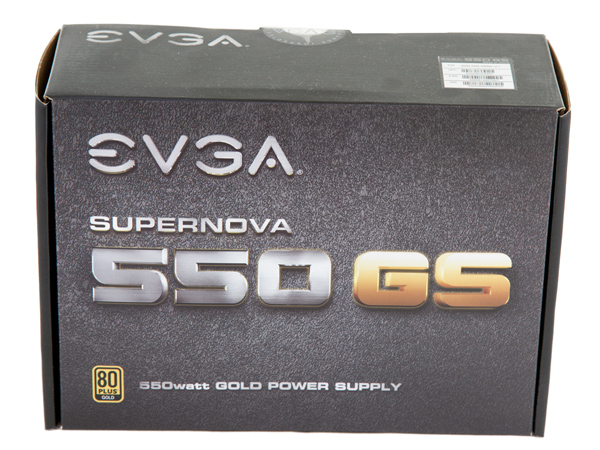
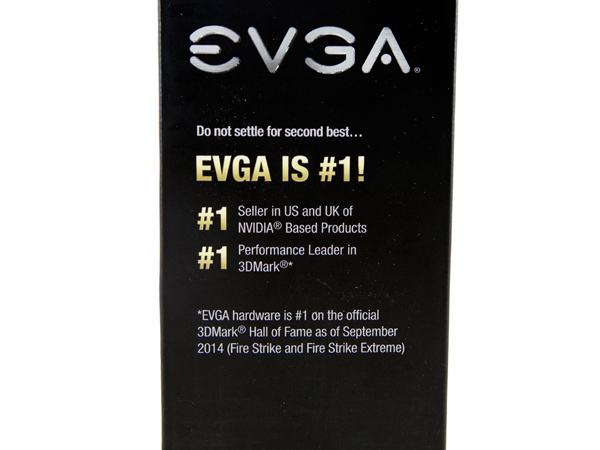
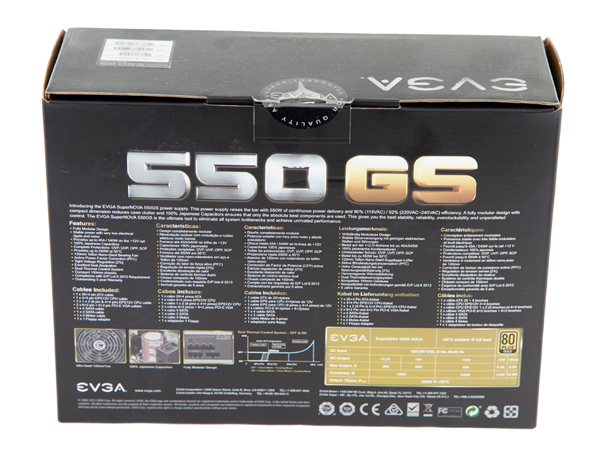
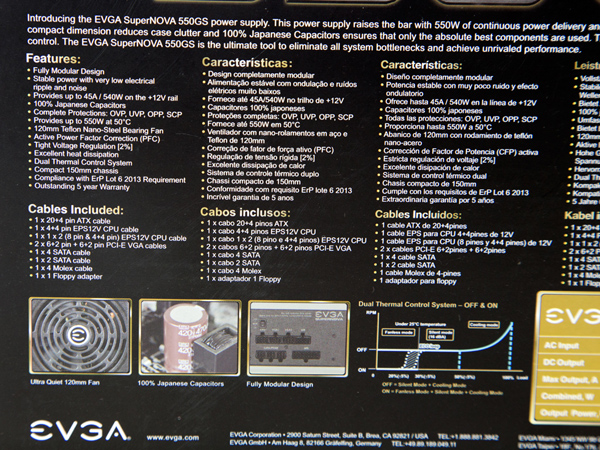
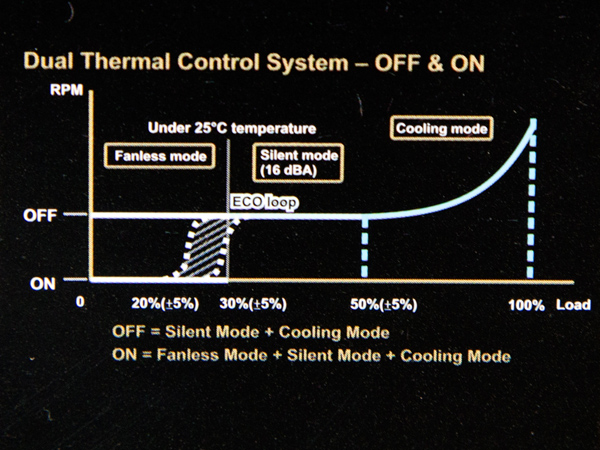
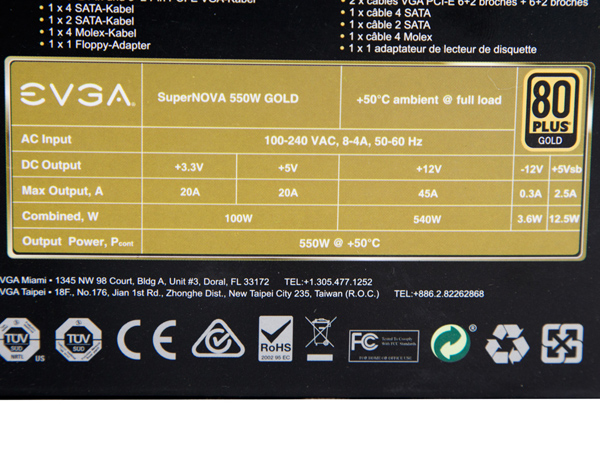
The design of the box is similar to the rest of EVGA's PSU offerings. On the front, we find a model description with the 80 PLUS Gold badge on the bottom-left corner. Three photos are provided around back, one depicting the APFC converter's bulk cap. It appears to be manufactured by Nippon Chemi-Con, though the unit we're testing comes with a high-quality Rubycon cap. Finally, an interesting graph shows the unit's fan operation in ECO and normal modes, and below the cable/connectors list is the power specifications table.
Contents
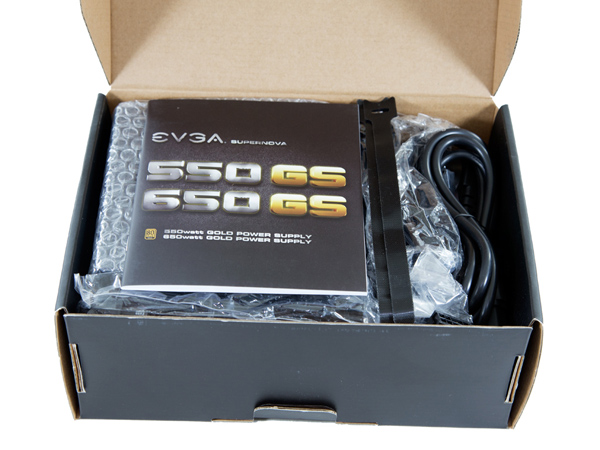
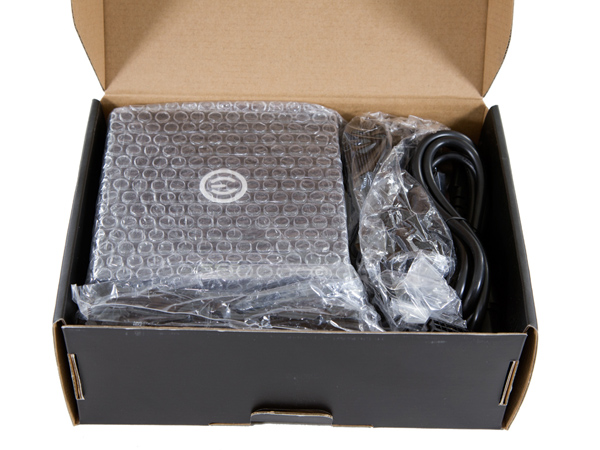
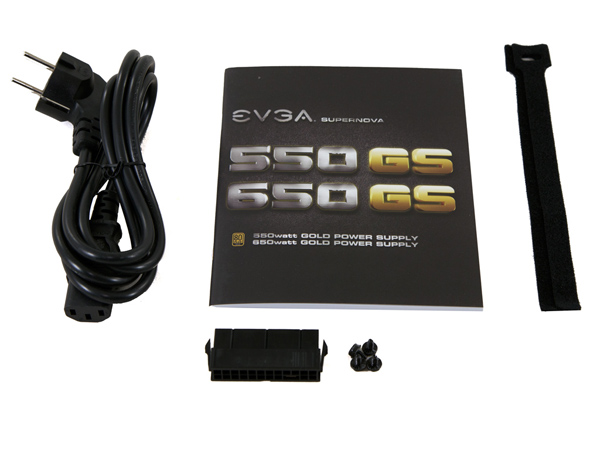
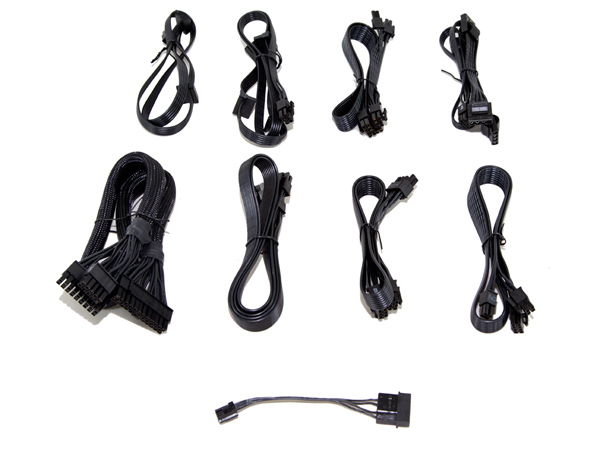
The PSU is protected by bubble wrap inside the box, which is not optimal, but will suffice if the shipping conditions aren't very tough. The bundle includes an informative user's manual, Velcro straps, a set of screws, the AC power cord, an ATX-bridging plug (through which you can start the PSU without having it connected to your system) and all necessary modular cables.
Exterior
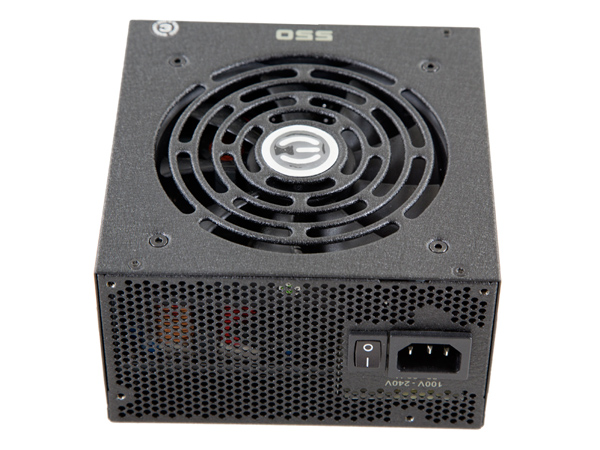
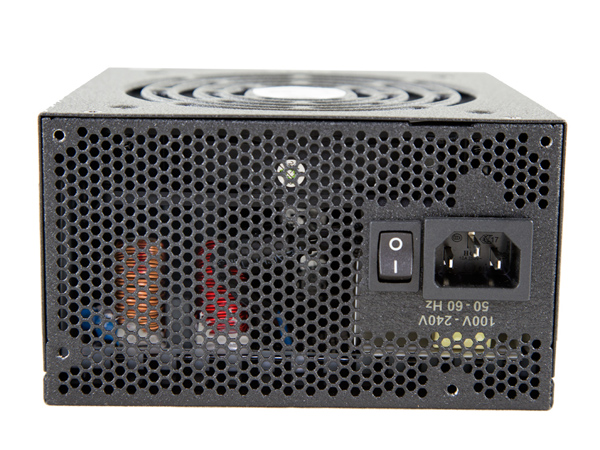
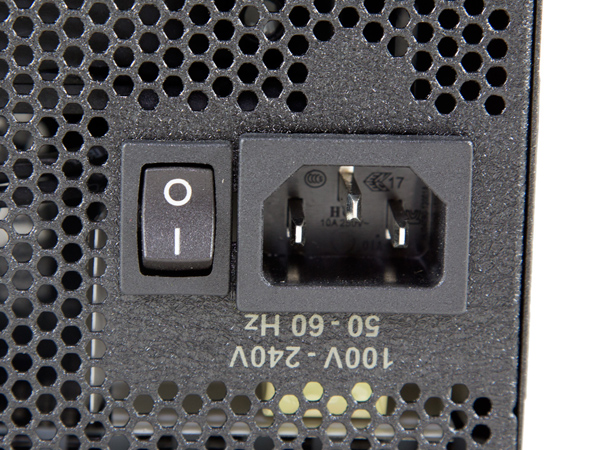
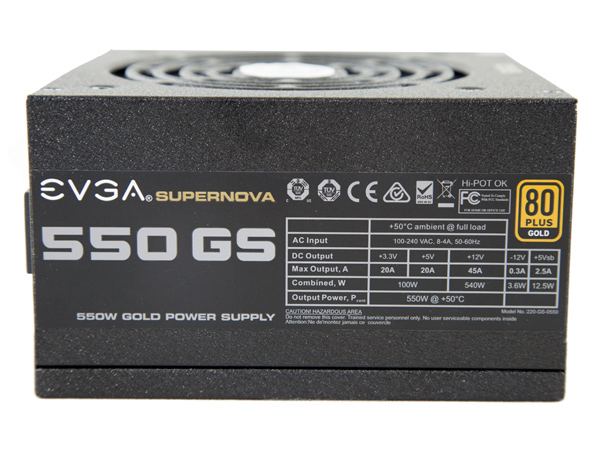

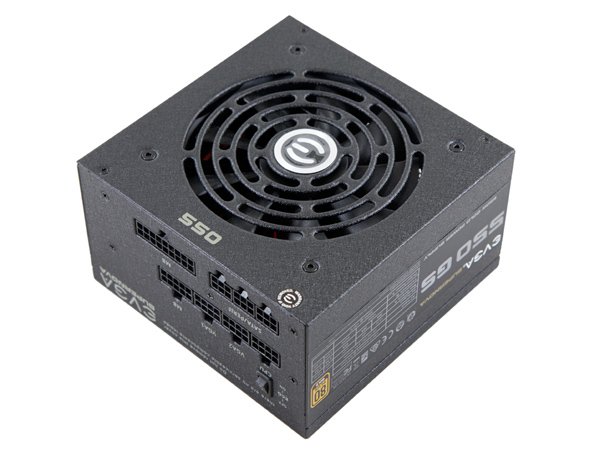
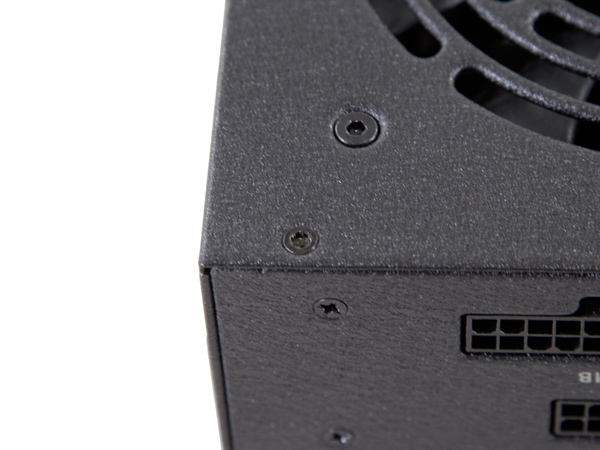
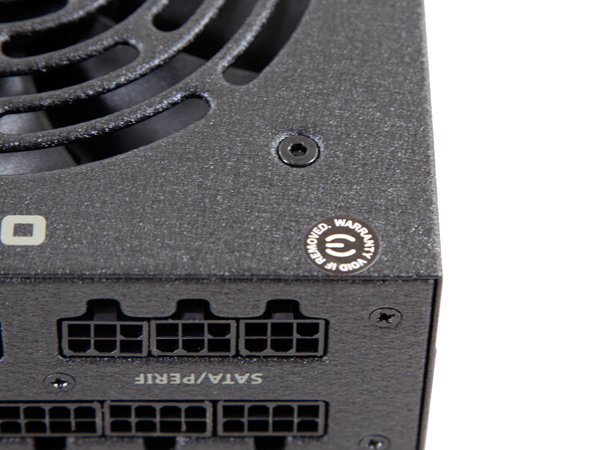
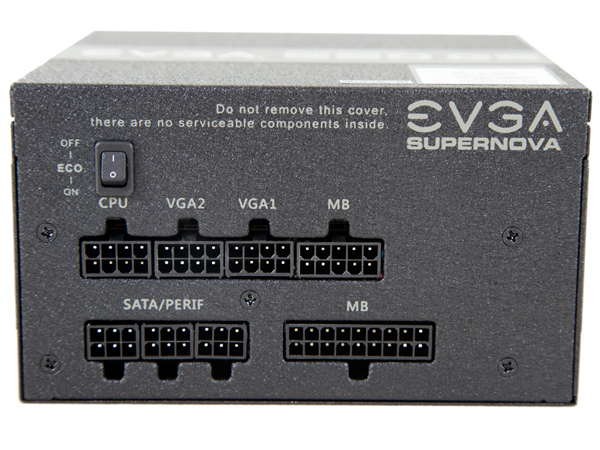
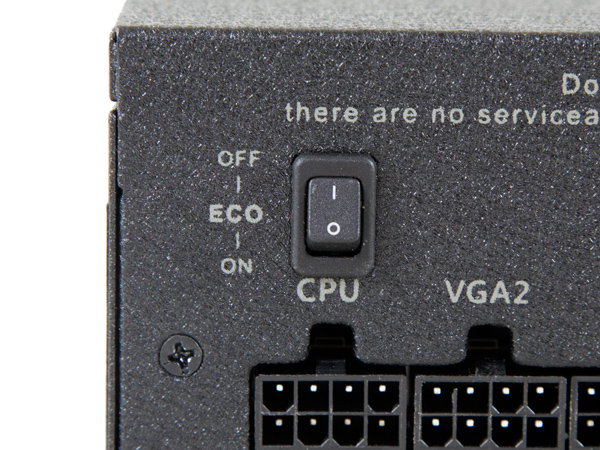
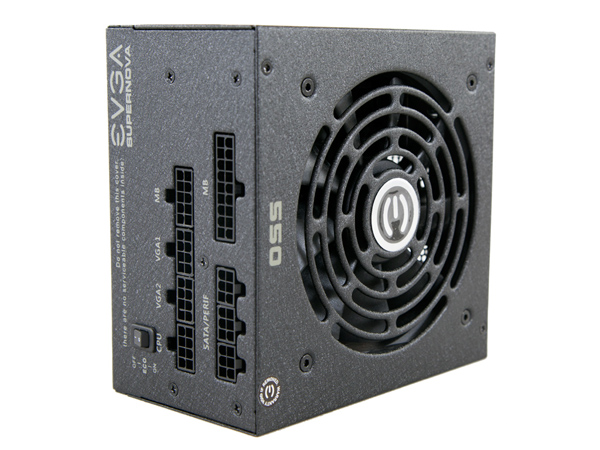
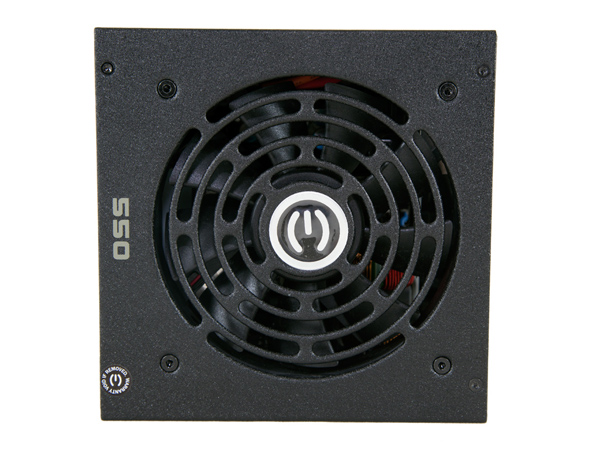
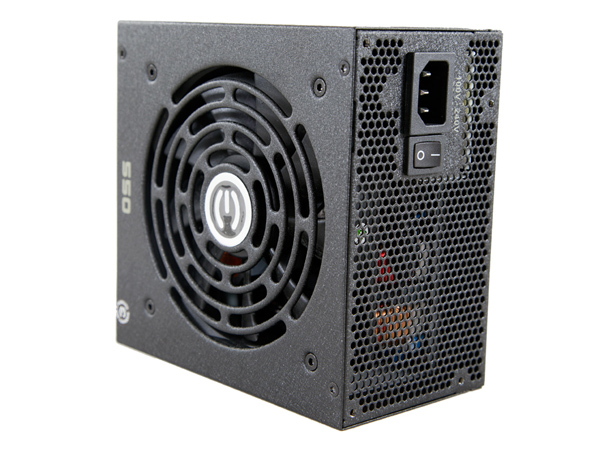
The PSU's textured finish is of high quality, and its matte surface doesn't attract fingerprints. It can't be scratched easily, either. The overall design is similar to other EVGA PSUs with the punched fan grill and honeycomb mesh on the front side, where we also find a small on/off switch right next to the AC socket.
The 120mm fan takes over most of the PSU's top side, and considering this unit's small dimensions, it could be tricky to install a larger 140mm fan. Around back, the modular panel has few sockets, while the ECO switch is located above the CPU cable's connector (a rather inconvenient place). It would be better if the switch was installed up front instead.
Cabling
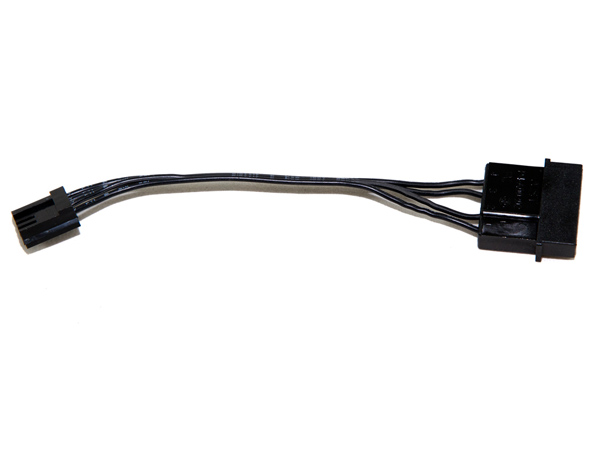
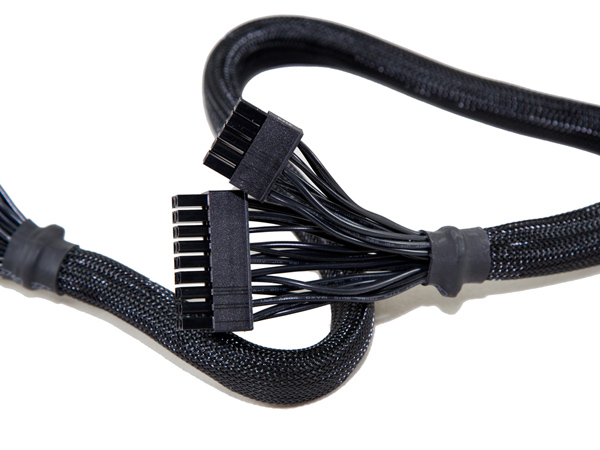
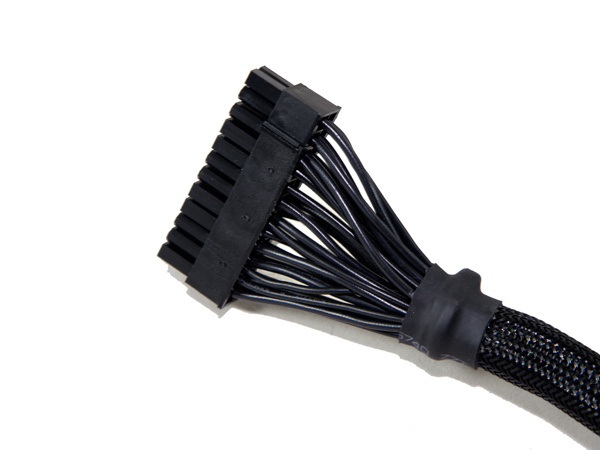
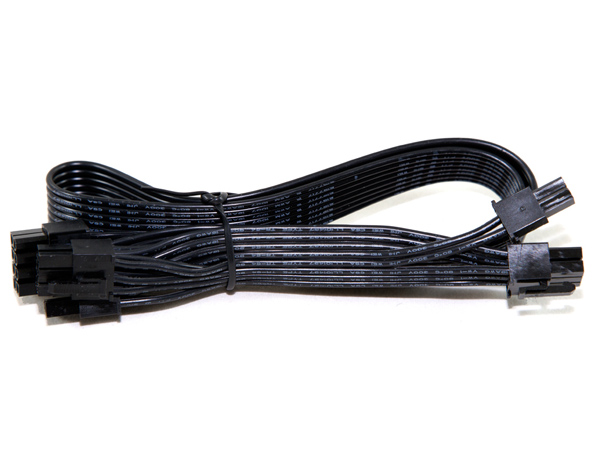
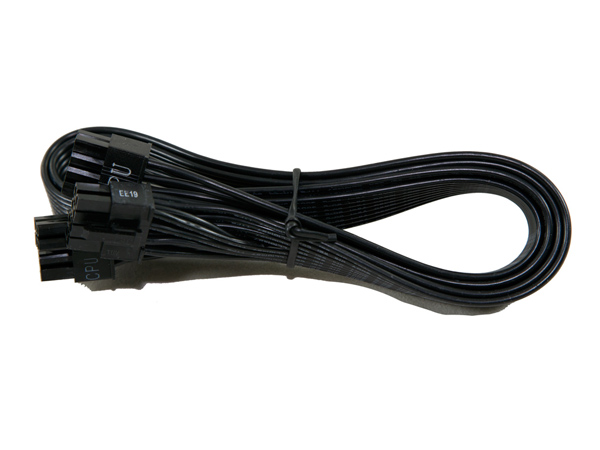

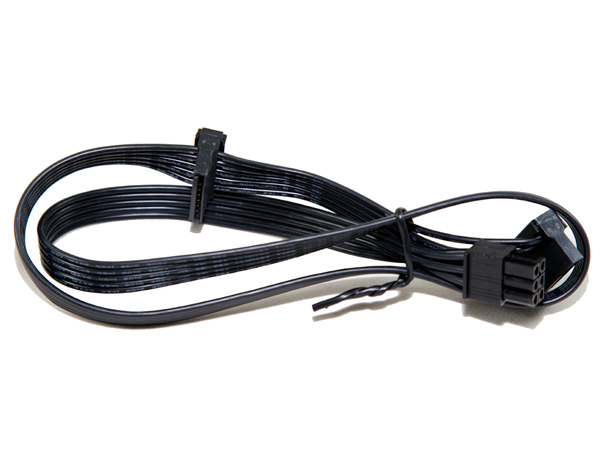
All cables are stealth and flat, except for the main ATX cable. Personally, I prefer flat, ribboned cables across the board because they block less airflow inside the chassis and can be more easily routed.
Get Tom's Hardware's best news and in-depth reviews, straight to your inbox.
Current page: Packaging, Contents, Exterior And Cabling
Prev Page EVGA SuperNOVA 550 GS Power Supply Review Next Page A Look Inside And Component Analysis
Aris Mpitziopoulos is a contributing editor at Tom's Hardware, covering PSUs.
-
Aris_Mp my last reviews were of smaller capacity units and I will try to bring even more of them.Reply -
Luay Coorection, EVGA did release a gold rated 1050W and 850W Seasonic PSU also branded as GS, and a platinum 1000W PS. There's also a 650W version of the PSU reviewed here which takes the total to five Seasonic OEMs branded by EVGA.Reply -
Larry Litmanen ReplyThere are less rippletastic options at that price point.
For the most part when it comes to PC parts you get what you pay for. Unless you spot a great sale, a 550W fully modular, 80 Gold PSU from a company like EVGA with a 5 year warranty. EVGA is super easy to deal with should you need to replace a unit. All that for $90? If this PSU was a 650W unit with same features and for the same price it would have been perfect.
-
atheus Reply
You mean the price would have been perfect? Confusing idea to change the wattage rather than just change the price. I take that to mean instead of a certain price/performance you would rather have a 650 watt PSU than a 550.There are less rippletastic options at that price point.
For the most part when it comes to PC parts you get what you pay for. Unless you spot a great sale, a 550W fully modular, 80 Gold PSU from a company like EVGA with a 5 year warranty. EVGA is super easy to deal with should you need to replace a unit. All that for $90? If this PSU was a 650W unit with same features and for the same price it would have been perfect.
I see 650 watt PSU's as only for SLI systems, which are fairly niche. With 550 you can handle any single GPU, and in the case of Maxwell GPU's <= 980 you could even SLI them so long as you aren't doing some obscene overclocking or running a dozen fans and pumps and a datacenter worth of HDD's. So for my go-to wattage for a standard high performance single GPU build is 550. For medium performance 450 is even better. -
logainofhades Unless you really feel the need for a gold rated PSU, I would probably save some cash and stick with a Seasonic 520w or 620w M12II. Even the 750w B2 series is cheaper.Reply -
Aris_Mp ReplyCoorection, EVGA did release a gold rated 1050W and 850W Seasonic PSU also branded as GS, and a platinum 1000W PS. There's also a 650W version of the PSU reviewed here which takes the total to five Seasonic OEMs branded by EVGA.
This is exactly what I write inside the review. Four GS PSUs and one PS.
"So far, the new PS series includes only a single unit with 1kW of max power; EVGA's GS line, on the other hand, has four PSUs with 550, 650, 850 and 1050W capacities."
I also have the 650 GS in my lab, but this isn't for Tom's.